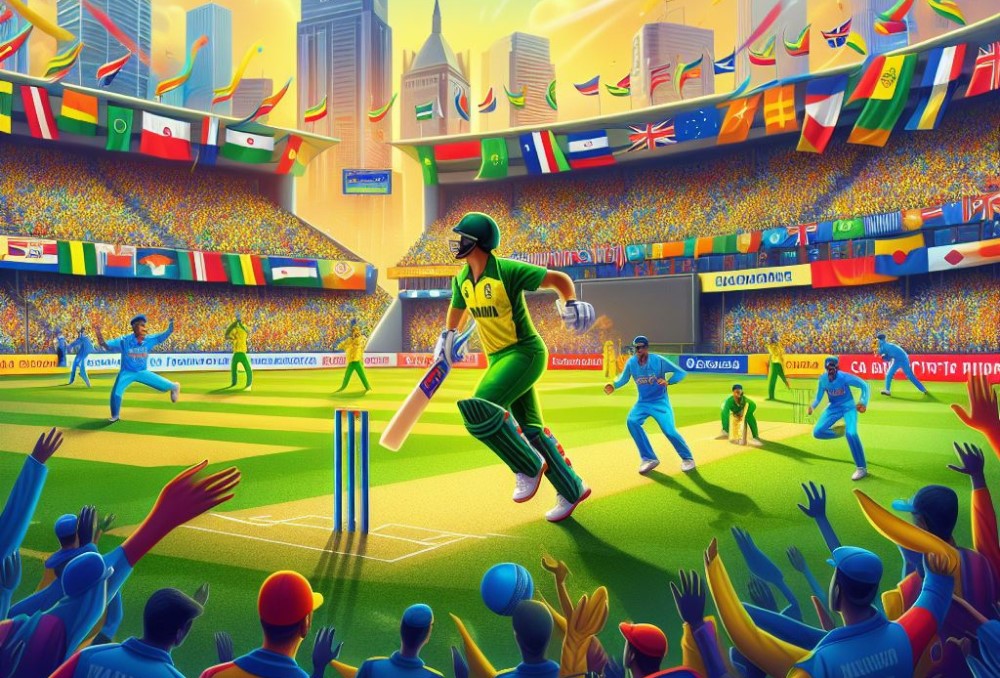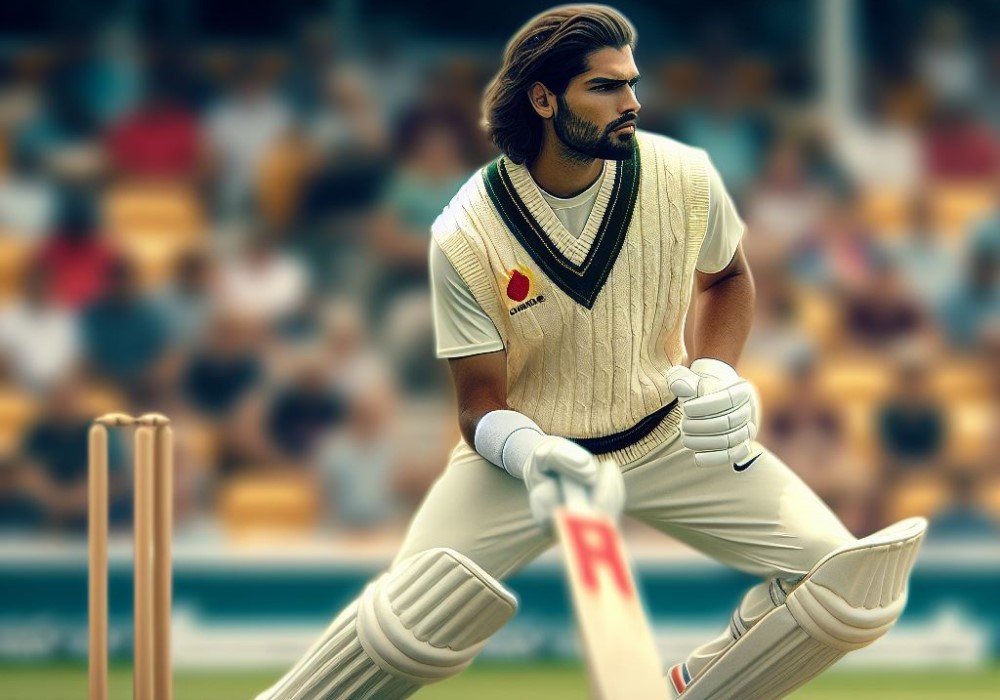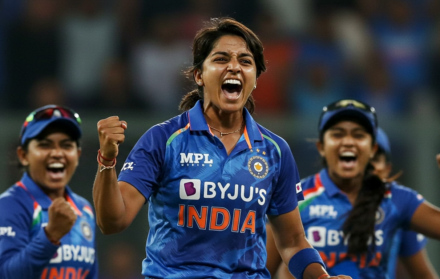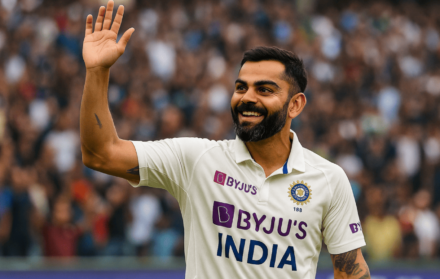
What Are The Different Formats Of Cricket
Cricket is a sport known for its different formats, each with its unique set of rules and characteristics. Understanding the various formats of cricket is essential for both players and fans. This article aims to provide an overview of these formats and highlight their key features and distinctions.
The different formats of cricket include Test Matches, One Day Internationals (ODIs), T20 Internationals (T20Is), as well as other formats such as First-Class Matches, List A Matches, and Domestic T20 Leagues.
Test Matches, the oldest and traditional form of the game, are characterized by their extended duration and strategic gameplay. They have a rich history spanning back to the 19th century and continue to be revered as the pinnacle of the sport.
ODIs, on the other hand, offer a faster-paced and limited-overs format. They gained popularity in the 1970s and revolutionized the game by introducing 50-overs-per-side matches, making cricket more accessible and exciting for fans.
T20Is, the shortest format, have experienced a meteoric rise in popularity since their introduction in 2005. With just 20 overs per side, T20Is prioritize aggressive strokeplay and high-scoring encounters, making them appealing for casual and new cricket audiences.
In addition to these three main formats, there are other cricket formats such as First-Class Matches, List A Matches, and Domestic T20 Leagues. These formats cater to different levels of competition and provide opportunities for players to showcase their skills in various settings.
While each format has its distinct characteristics, there are commonalities and differences that set them apart. These include factors like match duration, number of innings, batting and bowling strategies, scoring rates and tactics, and fielding restrictions.
By exploring the different formats of cricket and understanding their nuances, players and fans can fully appreciate the diversity and excitement that this sport has to offer.
Test Matches

Tests are the longest format of cricket, played over five days. They are considered the pinnacle of the sport and often referred to as the ultimate test of a player’s skill, endurance, and mental strength. During a Test Match, teams compete for victory by accumulating runs and taking wickets.
This format allows for strategic gameplay, with teams having the opportunity to bat twice.
Notable Test Match series include the Ashes between England and Australia and the Border-Gavaskar Trophy between India and Australia. Test Matches have a rich history and continue to captivate cricket fans around the world.
Pro-tip: Test matches offer a unique experience for cricket lovers, allowing them to witness the true test of skill and stamina in the game.
History and Significance of Test Matches
The history and significance of Test matches hold a significant place in the history of cricket. They are the oldest and most traditional format of the game, dating back to the 19th century. Test matches are considered the ultimate test of a player’s skills and endurance.
These matches are played over a period of five days, allowing for intense battles between nations. Test matches have witnessed some of the most iconic moments in cricket history, such as Don Bradman‘s extraordinary batting performances and Shane Warne‘s mesmerizing spin bowling.
The significance of Test matches lies in their ability to showcase the true essence and spirit of cricket.
Key Features of Test Matches
Test matches are the longest and oldest format of cricket, known for their unique characteristics and traditions.
- 5-day duration: Test matches are played over a period of five days, allowing for a comprehensive examination of a team’s skills and strategies.
- Two innings: Both teams have the opportunity to bat twice, testing their batting and bowling abilities in different conditions.
- Unlimited overs: Unlike limited-overs formats, there are no restrictions on the number of overs a team can play.
- Red ball: Test matches are traditionally played with a red ball, which presents different challenges for both batsmen and bowlers.
- Test Championship: The ICC World Test Championship is a tournament held to determine the best Test team in the world.
Pro-tip:Patience and endurance are key in Test matches. Success in this format requires consistent performance over long periods of time.
One Day Internationals

One Day Internationals (ODIs) are a format of cricket matches that are completed in a single day. They were introduced in the 1970s to provide a shorter alternative to Test matches. ODIs are played with limited overs, usually 50 per side, and each team has the opportunity to bat and bowl for a fixed number of overs.
ODI matches have gained immense popularity due to their fast-paced nature and limited time commitment. They are a regular feature in international cricket tournaments like the Cricket World Cup.
Fun fact: The highest individual score in an ODI is 264 runs, made by Rohit Sharma of India against Sri Lanka in 2014.
Evolution and Popularity of ODIs
The evolution and popularity of One Day Internationals (ODIs) have transformed over time due to their unique format and thrilling gameplay. ODIs offer a shorter duration compared to Test matches, making them more accessible and exciting for spectators.
The introduction of limited-overs cricket in the 1970s is a significant milestone in the evolution of ODIs. With their fast-paced nature and strategic gameplay, ODIs capture the attention of cricket fans worldwide.
The evolution and popularity of ODIs reflect the changing preferences of the audience and the need for a more dynamic and engaging form of the sport.
Format and Rules of ODIs
One Day Internationals (ODIs) are limited-overs cricket matches played between two national teams, with each team batting and bowling for a maximum of 50 overs. ODIs follow specific regulations regarding fielding restrictions, powerplays, and cricket gear, such as the white cricket ball and colored team uniforms.
- Innings: Each team gets one innings, aiming to score as many runs as possible within the allocated 50 overs.
- Tiebreaker: In case of a tie, a super over is played to determine the winner of the match.
Understanding the format and rules of ODIs is crucial for fans and players alike. It ensures fair play, excitement, and a thrilling cricket experience.
T20 Internationals

T20Is are a type of cricket match that follows the Twenty20 format, which consists of 20 overs per side. These matches are known for their fast-paced and thrilling nature, providing exciting entertainment to fans worldwide. T20Is have gained popularity due to their shorter duration and high-scoring games, attracting a wider audience.
They are matches with distinct characteristics such as aggressive batting, innovative shots, and explosive power-hitting. Fielding restrictions, limited overs per bowler, and strategic captaincy decisions are also features of T20Is. They have revolutionized the game by showcasing the players’ skills and adaptability in a condensed format.
Here’s a fun fact: T20Is have witnessed numerous batting milestones, including the first-ever 400-run score in a single match.
Rise and Popularity of T20Is
The rise and popularity of T20Is can be attributed to several factors that have captivated audiences and transformed the game of cricket.
- Shorter Duration: T20Is are quick matches that typically last for around three hours, making them more accessible and engaging for viewers with limited time.
- Fast-Paced Action: The format promotes aggressive batting, resulting in more boundaries and high-scoring matches, which adds excitement and thrill.
- Entertainment Value: T20Is incorporate elements like cheerleaders, music, and colorful uniforms, creating a vibrant atmosphere that appeals to a younger and wider audience.
- Innovation: The format has spurred innovative play styles, such as unorthodox shots and strategic variations, enhancing the unpredictability and entertainment of the game.
- Global Tournaments: High-profile tournaments like the Indian Premier League and T20 World Cup have expanded the reach and fanbase of T20 cricket worldwide.
Fact: T20Is have not only revolutionized the game but have also attracted non-cricketing nations like the USA and the Netherlands to actively participate in this dynamic format.
Distinct Characteristics of T20Is
T20 Internationals have distinct characteristics that set them apart from other cricket formats. They are known for their high intensity and fast-paced gameplay, with each team having only 20 overs to score as many runs as possible.
Batsmen in T20Is often adopt an aggressive approach, aiming to score boundaries and maximize the run rate. To keep the opposition guessing, batsmen often showcase a wide range of innovative shots, such as the scoop or switch-hit.
Bowlers in T20Is use a mix of pace variations, spin, and deceptive deliveries to keep the batsmen on their toes. Captains strategically position fielders to limit boundaries and create pressure on the batsmen.
T20Is feature some of the world’s best power-hitters, who can clear the boundaries with ease. The shorter duration of T20Is ensures that matches are action-packed and provide entertainment for spectators.
Other Cricket Formats

Discover the thrilling world of other cricket formats that go beyond the traditional matches we all know. From the intensity of First-Class Matches to the dynamic nature of List A Matches and the excitement of Domestic T20 Leagues, each sub-section holds its own unique allure.
Get ready to dive into the fascinating realm of cricket’s varied formats and explore the amazing feats, records, and rivalries that shape these thrilling competitions. Are you ready to explore the other side of cricket?
First-Class Matches
First-class matches are a traditional and prestigious form of cricket played over multiple days. These matches determine the champion team of a cricketing season. The format is known for its high standards and adherence to traditional cricketing rules.
- Match Type: First-Class Matches
- Duration: Generally 4 days
- Number of Innings: Each team gets 2 innings
- Scoring Rates: Focus on building a solid foundation
- Batting Strategies: Patience, technique, and endurance
- Bowling Strategies: Varied tactics to dismiss batsmen
- Fielding Restrictions: No specific fielding restrictions
Pro-tip: First-class matches offer a great opportunity for players to showcase their skills and resilience. Watching these matches provides a deeper understanding of the technical aspects of cricket.
List A Matches
List A Matches are a crucial part of domestic cricket leagues in countries like England, Australia, and India. These matches play a significant role in nurturing players who aspire to represent their nations at the international level. Here are the key aspects that define the essence of
- 50-overs per side: List A Matches consist of 50 overs per team, with each over comprising 6 deliveries.
- Professional level: As a highly professional form of cricket, List A Matches witness intense competition among players representing their regional or domestic teams.
- Batting and bowling statistics: Performing well in List A Matches enables players to achieve significant career milestones and enhance their individual records.
- Team rankings: The performances of teams in List A Matches directly impact their ranking in the domestic cricket circuit, thereby offering the best-performing teams an opportunity to participate in esteemed tournaments.
- Opportunity for talent scouting: List A Matches serve as an ideal platform for national selectors to spot and nurture talented players who could potentially join future international squads.
In essence, List A Matches hold immense importance as they provide players with invaluable experience, a platform to showcase their skills, and a chance to prove their mettle for higher honors in international cricket.
Domestic T20 Leagues
Domestic T20 Leagues have become immensely popular in the world of cricket. These leagues serve as a platform for local players to showcase their talent and attract international stars. Here are some essential points about
- Opportunity: Domestic T20 Leagues offer players the opportunity to gain exposure and experience, which can potentially lead to their selection for national teams.
- Global Participation: Leagues like the Indian Premier League (IPL) and Big Bash League (BBL) attract players from around the globe, thereby increasing the level of competition.
- Financial Benefits: Players involved in Domestic T20 Leagues can earn substantial amounts of money through contracts and sponsorships, which significantly enhances their careers and quality of life.
- Fan Engagement: Domestic T20 Leagues have a passionate fan base, with supporters attending matches, watching on TV, and actively engaging on social media.
- Entertainment Factor: Along with the intense cricketing action, these leagues offer additional forms of entertainment, such as cheerleaders, music, and fireworks.
Differences and Similarities between Cricket Formats

Discover the exciting world of cricket formats as we delve into the intriguing differences and similarities between them. From match durations to batting and bowling strategies, and even scoring rates and fielding restrictions, we’ll unpack all the essential aspects that set each format apart.
So, if you’re curious about how the number of innings and evolving tactics shape the game, stay tuned for an insightful journey into the fascinating world of cricket formats.
Match Duration
The duration of cricket matches can vary significantly depending on the format being played. Here is a table showcasing the duration of each cricket format:
| Format | Match Duration |
|---|---|
| Test Matches | 5 days |
| One Day Internationals (ODIs) | 8 hours |
| T20 Internationals (T20Is) | 3 hours |
| First-Class Matches | 3-4 days |
| List A Matches | 8 hours |
| Domestic T20 Leagues | 3-4 hours |
In a similar vein, there is an interesting story about the longest cricket match ever played. It took place between England and South Africa in 1939 and lasted for a whopping 12 days! Due to rain delays and stubborn batting from both teams, the match kept stretching.
Eventually, it had to be called off because the English team had to depart for their journey back home. This extraordinary match is a testament to the endurance and passion of cricket players.
Number of Innings
The number of innings in various cricket formats differs, affecting game strategies and duration. Here is a table showcasing the number of innings in each format:
| Format | Number of Innings |
| Test Matches | Two (both teams bat twice) |
| One Day Internationals (ODIs) | Two (each team bats once) |
| T20 Internationals (T20Is) | One (each team bats once) |
| First-Class Matches | Two (both teams bat twice) |
| List A Matches | Two (each team bats once) |
| Domestic T20 Leagues | One (each team bats once) |
Batting and Bowling Strategies
Effective batting and bowling strategies are essential for success in cricket. Here are some key strategies to consider:
- Batting Strategies:
- Assess the pitch conditions and adjust your technique accordingly.
- Know your strengths and play shots that suit your style.
- Have a clear game plan, including shot selection and scoring areas.
- Rotate the strike consistently to keep the scoreboard ticking.
- Be patient and build partnerships with your teammates.
- Bowling Strategies:
- Study the batsman’s weaknesses and exploit them.
- Bowl in the right areas consistently to create pressure.
- Vary your pace, line, and length to keep the batsman guessing.
- Use change-ups like slower balls and variations to deceive the batsman.
- Work in tandem with your fielders to create catching opportunities.
Remember, practice and experience are crucial in developing effective batting and bowling strategies. Regular net sessions and understanding the game dynamics will help you refine your skills and improve your performance.
Scoring Rates and Tactics
- Test Matches: Scoring rate is relatively slower, with focus on building innings and preserving wickets. Batsmen adopt a cautious approach, aiming to occupy the crease for a longer duration. Bowlers emphasize on discipline and consistent line-length.
- ODIs: Scoring rate is moderate to high, with an emphasis on aggressive stroke play and quick runs. Batsmen play attacking shots to capitalize on fielding restrictions, while bowlers work on variations and maintaining consistent line-length to restrict runs.
- T20Is: Scoring rate is very high, with focus on aggressive and explosive batting. Batsmen target boundaries and play innovative shots to maximize runs, while bowlers employ variations and strategic field placements to contain the opposition.
Pro-tip: Understanding the specific scoring rates and tactics of each cricket format is vital, as it enables teams and players to adapt their strategies effectively and optimize their performance.
Fielding Restrictions
Fielding restrictions in cricket, also known as fielding restrictions, are rules that impose limitations on the placement of fielders in specific areas during certain periods of the game.
These restrictions play a vital role in influencing the gameplay and strategies utilized by teams. The provided table presents a summary of the fielding restrictions observed in various cricket formats:
| Format | Number of Fielders Outside the Circle | Restriction Periods |
|---|---|---|
| ODIs | 4 | First 10 overs and in the Powerplay |
| T20Is | 5 | First 6 overs and in the Powerplay |
| Test Matches | No restrictions | N/A |
During the final match of the 2011 ICC Cricket World Cup, contested between India and Sri Lanka, the fielding restrictions applied during the Powerplay overs resulted in an exhilarating exhibition of attacking cricket. Sri Lanka effectively capitalized on these restrictions, adopting an aggressive approach to scoring.
Meanwhile, India strategically positioned their fielders to seize crucial catches. This noteworthy display underscored the significance of fielding restrictions in shaping the dynamics and intensity of the game.
Frequently Asked Questions
What are the different formats of cricket?
Cricket is played in three main formats: Test matches, One Day Internationals (ODIs), and Twenty20 Internationals (T20Is). Test matches are the oldest and longest form, lasting five days with two innings per team. ODIs are limited to 50 overs per side, while T20Is are 20-over matches.
How long does a Test match last?
Test matches can last up to five days. Each team has two innings, and the team with the highest run total at the end of the match wins. Test cricket is known for its strategic gameplay and can be a mentally and physically demanding format for the players.
What is the difference between ODIs and T20Is?
ODIs and T20Is are both limited overs formats, but with different durations. ODIs consist of 50 overs per side and take a whole day to complete. T20Is, on the other hand, are 20-over matches, typically lasting around three-and-a-half hours.
What are franchise leagues in T20 cricket?
Franchise leagues in T20 cricket, such as the Indian Premier League (IPL), Australian Big Bash League (BBL), and Caribbean Premier League (CPL), are similar to team sports leagues in other sports like the NFL or NBA. Each team in these leagues consists of players from different countries, adding a multi-faceted aspect to the sport.
What are the ICC rankings in cricket?
The ICC ranks cricket teams in each format based on their performance. The MRF Tyres ICC Test Match Rankings, for example, determine the top-ranked Test team, who receives a cash prize of $1 million. The ICC also has rankings for ODIs and T20Is to assess the standard of play in these formats.
What tournaments are played in the ODI format?
The ODI format is primarily used for the ICC Cricket World Cup, held every four years. Additionally, the ICC organizes other tournaments like the ICC Women’s World Cup and the ICC Under 19 Cricket World Cup in the 50-over format.





